Investigation of stimulated growth effect using pulsed cold atmospheric plasma treatment on Ganoderma lucidum
Mengqi LI(李孟琦),Xiaoyi HUANG(黄晓义)and Zilan XIONG(熊紫兰)
State Key Laboratory of Advanced Electromagnetic Engineering and Technology,Huazhong University of Science and Technology,Wuhan 430074,People’s Republic of China
Abstract Cold atmospheric plasma(CAP)driven by pulsed high-voltage power has specific advantages in various fields,such as the growth promotion of edible fungi in plasma agriculture.Compared with other strains,Ganoderma lucidum has the significant advantage of high medicinal value,but the shortcomings of low yield,long growth cycle,and an uneven market quality.In this study,Ganoderma lucidum was treated with a CAP powered by a homemade pulsed highvoltage power supply.Three groups of Ganoderma lucidum were treated under different conditions.The stalk lengths and pileus areas of Ganoderma lucidum were recorded to evaluate growth status.Results showed that treatment frequency affected growth status considerably.Ganoderma lucidum was treated with 40 s plasma once a week and showed an improved growth status with a 33.63% increase in average stalk length and a 28% increase in the number of individuals whose pileus areas was greater than the average.Meanwhile,the growth speed was accelerated.However,treatment at an excessive frequency would damage and slow down the growth of Ganoderma lucidum.
Keywords:low temperature plasma,plasma agriculture,edible fungi,Ganoderma lucidum,stimulated growth
1.Introduction
According to previous studies,air cold atmospheric plasma(CAP)can generate a variety of reactive oxygen species,suchand H2O2and reactive nitrogen species,such as NO,NO2,and·ONOO-.These species have shown potential applicability in bio-medicine,food sterilization,wastewater treatment,space technology,air purification,and surface modification of materials[1-3].CAPs are generated in the atmosphere at approximately ambient temperatures,further expanding their applications without heat damage and environmental pollution problems.Meanwhile,CAPs driven by a high-voltage pulse supply have the advantages of high electron density,low temperature,easy ignition,easy production of uniform large-area plasma,and energy savings[4].Pulse-driven CAPs have great performance in the biology field,which requires low temperature and high activities,such as healing wounds and promoting seed germination[5-8].
Ganoderma lucidum(G.lucidum)is an edible fungus possessing several pharmacologically active constituents,most importantly triterpenoids and polysaccharides.These constituents,especially β-d-glucans,possess anti-tumor activities,hepatoprotective,antihypertensive,and hypocholesterolemic effects,among others[9,10].The high medicinal value ofG.lucidumhas led to its increased commercial value[11,12];however,the unavoidable disadvantages of low yield,long growth cycle,and mixed quality limit its range of applications.The growth cycle ofG.lucidumin its habitat is typically 9-10 months.Soil erosion owing to vegetation destruction increases the loss of this growth environment.Meanwhile,the artificial cultivation cycle is time-consuming,normally requiring 1-3 months[13].The yield is also unstable,and the quality is mixed.Therefore,it is necessary to develop an effective method for the cultivation ofG.lucidum.
In early attempts in agriculture,low-pressure plasma treatment was used for stimulating seed germination[14-16].In addition to its good performance,CAP treatment has gained wide attention due to its advantages of low cost and less complexity[6,17-19].It has been reported that the plasma source structure,the amplitude and frequency of the discharge voltage,and the gas environment would affect the treatment effect of CAP[5,20,21].CAP treatment can be divided into direct and indirect treatment manners[22],and it is known that CAP treatment is capable to stimulate the growth of many kinds of organisms.For example,the direct treatment of soybeans with CAP could improve the germination percentage and growth quality[23].Jiet aldiscovered that spinach treated with high-voltage nanosecond pulsed plasma and micro dielectric barrier discharge(DBD)plasma exhibited enhanced seed germination[24].According to Kitazakiet al,using combinatorial atmospheric air DBD plasmas could induce long-term growth enhancement ofRaphanus sativus[25].The effect of indirect plasma treatment using plasma-activated water(PAW)on the promotion of organism growth has also been studied.PAW could be prepared by directly discharging inside liquids or discharging on the liquid surface[5,26,27].Takakiet alproduced PAW by using underwater discharge to improve plant growth rate,in which they selected the drainage water from the plant pot as the liquid[26].Zhouet alproved the enhancement effect of PAW treatment on mung bean seed germination,seedling growth and sprout sterilization[28].Existing researches show that CAP treatment will reduce the pH and improve the concentration of RONS in liquids[29],which are considered the main reason for growth stimulation by PAW.Meanwhile,plasma dosage is also a key issue,which will significantly affect the treatment effect.Excessive treatment will damage the plants.How to balance the promoting and inhibiting effects is of vital importance[30].Recently,Shimizuet alsimulated natural lightning using a pulse voltage generator and stimulated shiitake mushroom logs without direct lightning application to the cultivated bed logs.They found that lightning promoted the growth of mushrooms[31].Therefore,based on these investigations,we aimed to study the possible effect of plasma treatment on the growth ofG.lucidum.
In this study,a high-voltage pulse power supply was designed for CAP generation to treatG.lucidumcultivation spawns.The effect of pulsed CAP treatment was confirmed by comparing the differences inG.lucidumgrowth among the treatments at different intervals.The stalk length and pileus area ofG.lucidumwere recorded as the evaluation basis of growth status,and the growth parameters were analyzed by means of statistics.Finally,a possible mechanism was proposed.
2.Materials and methods
The overall system structure is illustrated in figure 1.The needle plasma source was driven by a homemade high-voltage pulse power supply to generate pulsed CAPs that were implemented in theG.lucidumcultivation spawns.Meanwhile,we monitored the discharge circuit and plasma parameters to ensure that the experiment was operated normally and safely,and that it was harmless to theG.lucidumcultivation spawns.
2.1.G.lucidum cultivation spawn
Generally,G.lucidumstrains are divided into three classes.The first-class strain(the mother strain or test-tube strain)is a pure strain derived from the spore or tissue separation ofG.lucidum.The mycelium of the first-class strain was inoculated into wood chips or other media,and after constant temperature culture,the second-class strain was inoculated into the jar or bag medium.The second-class strain,also called the original strain,is typically used to produce the third-class strain.The third-class(the cultivated strain)consists of a large number of mycelia from the expanded reproduction of the second-class strain.It is widely used for direct cultivation and production ofG.lucidum.It is usually inoculated in a cylindrical bag medium,that is,G.lucidumcultivation spawns.To study the possible growth stimulation ofG.lucidumusing pulsed CAP treatment,a third-class strain was used in this experiment[32-34].
2.2.Homemade high voltage pulse power supply
A high-voltage pulsed power supply can be implemented using multiple topologies.With the development of solidstate switches,all-solid-state Marx generators have been widely used in various fields,owing to their high response speed,small volume,high precision,high controllability,and long lifetime.This is considerably different from the traditional Marx generators that use gas switches.For a more stable and flexible plasma source,we chose a fast-recovery diode-isolated Marx generator as the main circuit in the pulse power supply design.
The topology of the high-voltage pulse power supply is illustrated in the front part of figure 1.The input DC voltage was converted into a pulse voltage by the Marx generator.Meanwhile,the value of the output pulse voltage also increased by a certain fold,the same as the number of Marx generator stages,and then the transformer continued to amplify the output voltage[35].
The number of stages of the Marx generator was six.The circuits of each stage were isolated by fast-recovery diodes,and the all-solid-state switches were turned on and off synchronously.When the solid-state switches are turned off,the DC power supply charges the capacitors in parallel;when solid-state switches are turned on,the capacitors are discharged in series.After each stage of the voltage value is superimposed,the voltage output to the load is amplified at the same time as the number of stages[36].
In this experiment,a transformer was used at a ratio of 14.When the input DC voltage is adjusted from 0 to 110 V,the output voltage peak value can be increased to 9 kV.
2.3.Plasma treatment
Point discharge in air was selected as technique for CAPs production because it is convenient and flexible enough to concentrate plasmas on the cultivation spawn and body ofG.lucidum.
For the point discharge,the tip of the stainless-steel electrode had a large surface curvature with a diameter of 3.5 mm.During the treatment,the needle electrode was mounted on an insulating rod while a polyvinyl chloride(PVC)tube was fixed on its exterior to ensure that the distance between the needle tip and target was maintained at 2 mm during the treatment.Figure 2(a)shows the schematic diagram of plasma treatment onG.lucidum.The cultivation spawn is connected to the ground and the top of theG.lucidumcultivation spawns as well as the body ofG.lucidum(mainly the stalk)was treated by moving the insulating rod.A photograph taken during the discharge process is shown in figure 2(b).

Figure 1.Overall system structure.
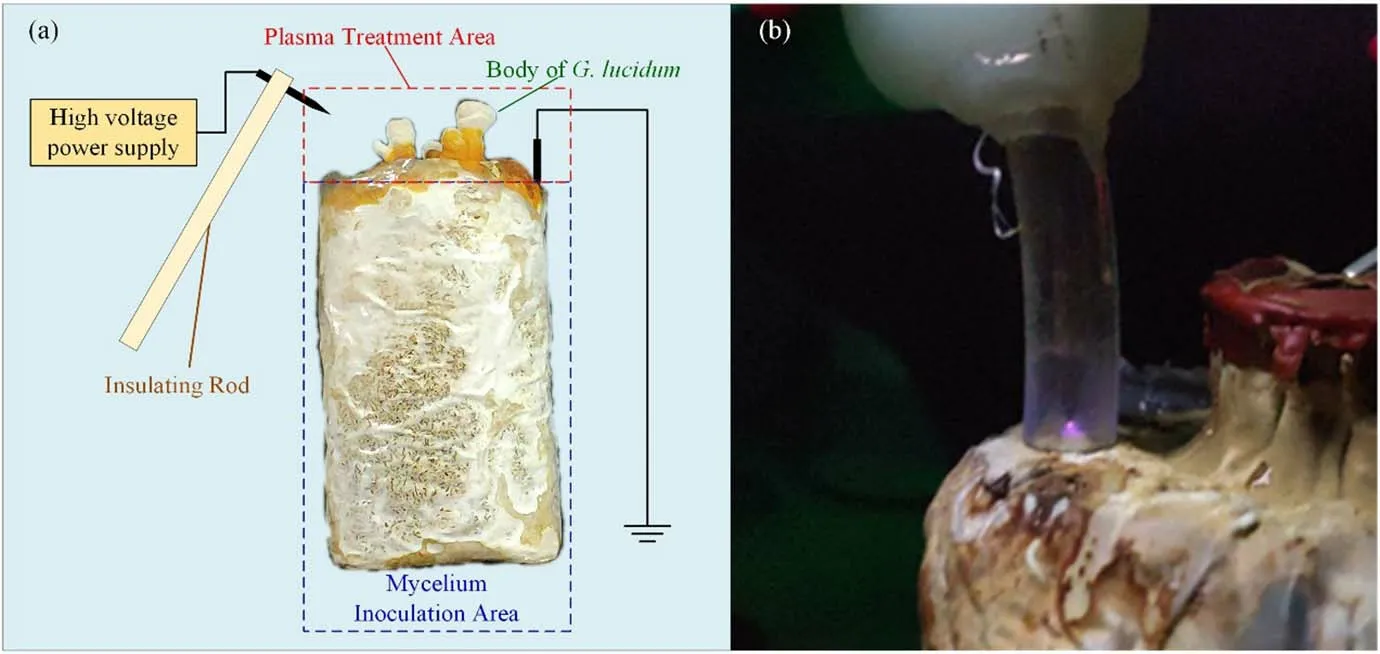
Figure 2.Pulsed CAPs treatment on G.lucidum.(a)Schematic diagram and(b)image of plasma treatment.
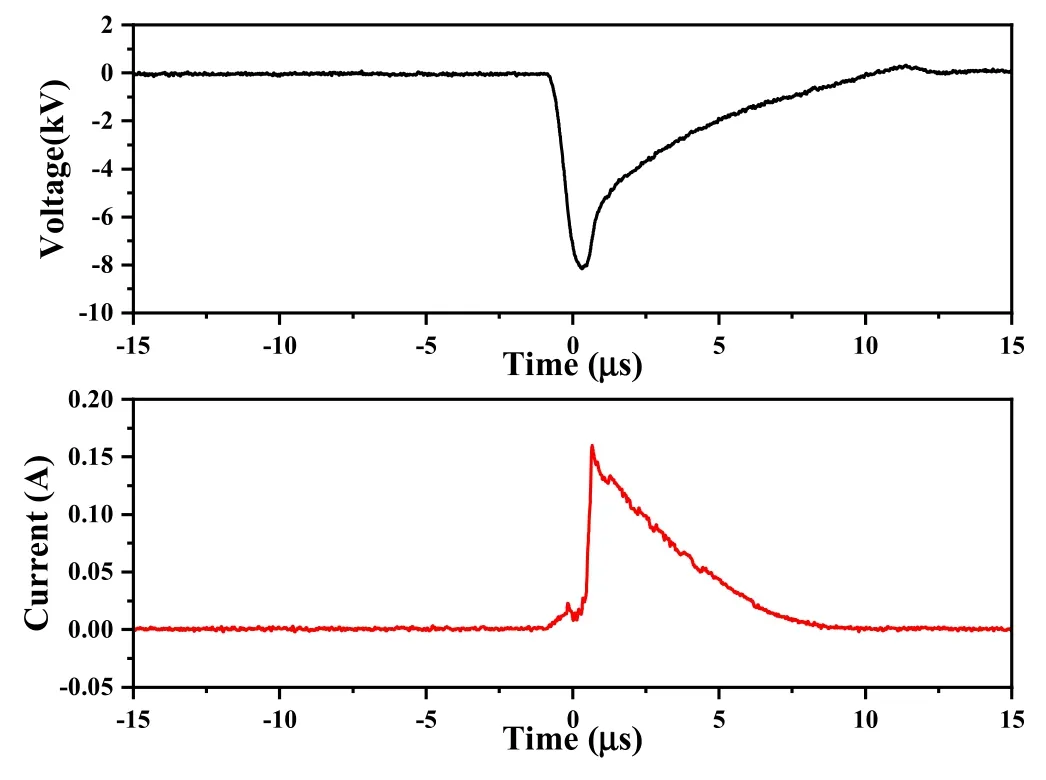
Figure 3.Applied voltage and current waveforms.

Figure 4.Measured emission spectra.

Figure 5.The measured and fitting emission spectra.
We selectedG.lucidumcultivation spawns that were inoculated and cultured under the same conditions to reduce the differences among the experimental cultivation spawns.They were separated into three groups;group 1 was the control group without treatment;group 2 was treated for 40 s with pulsed CAP once every three days;and group 3 was treated for 40 s with pulsed CAPs once every seven days.All groups were cultivated under the same conditions.The culture temperature and humidity were controlled at approximately
(20±1.5)°C and 90%±7% Rh,respectively using an artificial climate chamber(RLD-1000D-4,China).
To monitor the circuit parameters,voltage(P6015A,Tektronix,USA)and current(P6585,Pearson,USA)probes were used to measure the voltage and current parameters during discharge.The optical emission spectrum was detected using a spectrograph(SR-500I-A,Andor,UK)with an intensified charge-coupled device.We equipped a fiber-optic adapter with the spectrograph,selected a 300 l mm-1grating,and placed the fiber-optic probe on one side of the discharge tip to collect the plasma emission spectral signals in the 100-800 nm range.The rotational temperature of the plasma can then be obtained by spectrum fitting using the N2second positive band.
2.4.Growth status recording and statistical method
The growth state of theG.lucidumfruiting body(stalk length and pileus area)was recorded during the treatment.The growth process ofG.lucidumwas divided into the following periods:squaring,pileus formation,opening,early spore discharging,and late spore discharging periods.Although changes in stalk length occurred during the squaring period and the pileus formation period,data collection on stalk length mainly occurred during the pileus formation period.Likewise,data collection on the pileus area mainly occurred during the spore opening period although changes in pileus area happened during the pileus formation and opening periods[37].The recording methods were to capture photos ofG.lucidumand to calculate the parameters.We ensured that the photos had a uniform scale standard for calculation.
When collecting growth information,we fixed a platform for each photoshoot,placed a scale on the plane to be measured,and took photos using a camera at the same position every time.Furthermore,we rotatedG.lucidumto capture pictures from multiple angles;then,photos were imported into the software PHOTOSHOP.The scale of the photos was measured using the ruler tool to obtain the number of pixels per centimeter recorded as the reference length(RL)and the number of stalk length pixels recorded as the target length(TL).The term‘stalk length(SL)’was used in place of‘height’because several side views were captured to ensure that the lengths of differentG.lucidumon the same cultivation spawn were measured.SL was calculated as follows:

Similarly,the number of pixels per square centimeter was measured using both the rectangular and histogram tools and recorded as the reference area(RA).The number of pileus area pixels was measured using quick selection in the tool bar and recorded as the target area(TA).Pileus areas(PA)ofG.lucidumwere calculated as follows:

3.Results
3.1.Plasma parameters
The pulsed voltage and current waveforms during the discharge are shown in figure 3.The frequencies of the voltage and current were fixed at 500 Hz,and the peak values of the pulsed voltage and current were~-8 kV and~0.16 A,respectively.The pulse shapes of the voltage and current are similar;they are not standard squares but triangles.The full widths at half maxima of their pulse widths are~2.37 and~2.65 μs,respectively with the voltage sharply increasing at the rising edge of~484 ns.The discharge power could be obtained by integrating the product of voltage and current with time,and it was calculated as 0.99 W in this study.The discharge process is relatively weak and ensures that it does not damageG.lucidumcultivation spawns during short-term treatment.
Optical emission spectroscopy(OES)measurements are shown in figure 4.In this experiment,plasma was generated from air,which consisted mainly of nitrogen and oxygen.It is reasonable that major optical emission lines from atomic N,O,and N2(C-B)were observed[38].N2second positive band(C3∏u→B3∏g)was mainly observed in the 295-400 nm range[39]and atomic N in the 740-750 nm range[40].Auto O lines were observed at 713,762,and 777 nm without any obvious emission lines of O+and O2+ions[39].
The measured and fitted spectra are shown in figure 5.In this section,we selected a 2400 l mm-1grating to measure the spectra for higher precision.The fitting waveform with a rotation temperature of 353±50 K was closest to the measured waveform.It is a relatively weak discharge process barely damaging toG.lucidum.
3.2.Stalk length
Side-view images of typical samples from the three groups are shown in figure 6.Different horizontal rows of photographs were taken on different growth days.Horizontal photos from top to bottom were separately captured on the 11th,43rd,and 62nd cultivation days,and vertical photos from left to right belong to groups 1,2,and 3,respectively.The stalk length increased in all three groups with increased cultivation time.It is difficult to directly compare the different stalk lengths from the images.We discovered that the stalk length of theG.lucidumfruit body mainly grew during the first 39 cultivation days,and there was almost no change in the days after.Table 1 shows the statistical results for the final stalk length on the 39th day of cultivation for comparison.The average length of group 3 is larger than those of the others.Compared to the control group,group 3 had an average stalk length of 33.63%,whereas group 2 only increased by 14.07%.Group 3 showed the highest stimulatory growth effect.

Table 1.Final stalk length of G.lucidum fruit body on the 39th day of cultivation.
3.3.Pileus area
Similarly,a top-view comparison of some typical examples from the three groups is shown in figure 7.Different horizontal rows of photographs were taken on different growth days.The horizontal photos from top to bottom were taken separately on the 11th,43rd,and 62nd cultivation days,and vertical photos from left to right belong to groups 1,2,and 3,respectively.The pileus area of group 3 was clearly larger than those of the others at the same time.As seen from the images,the pileus area grew larger with increasing cultivation time in all the groups.Figure 8 shows the statistical results for the final pileus area on the 62nd day for comparison.The average pileus area of allG.lucidumsgroups was 31.34 cm2,while that of group 1 was 31.39 cm2,group 2 was 23.69 cm2,and group 3 was 41.12 cm2.We can clearly see that group 3 greatly increased the total pileus area and produced more fruit bodies than that of the average.Consequently,group 3 had the best effect while group 2 showed the worst effect.

Figure 6.Side view comparison of typical examples from three separate groups.Group 1:(a1),(b1)and(c1)were taken on day 11;group 2:(a2),(b2),and(c2)were taken on day 43;and group 3:and(a3),(b3),and(c3)were taken on day 62.
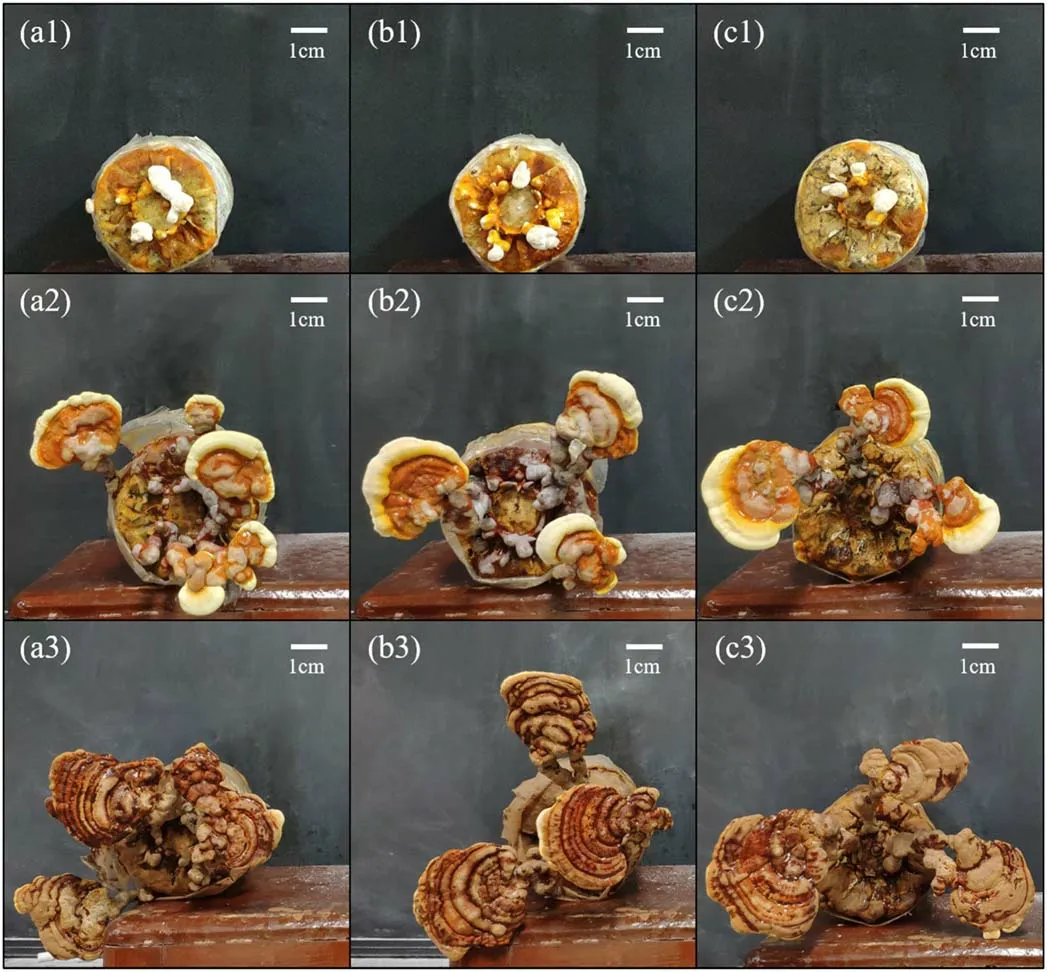
Figure 7.Top view comparison of typical examples from three separate groups.Group 1:(a1),(b1)and(c1)were taken on day 11;group 2:(a2),(b2),and(c2)were taken on day 43;and group 3:and(a3),(b3),and(c3)were taken on day 62.
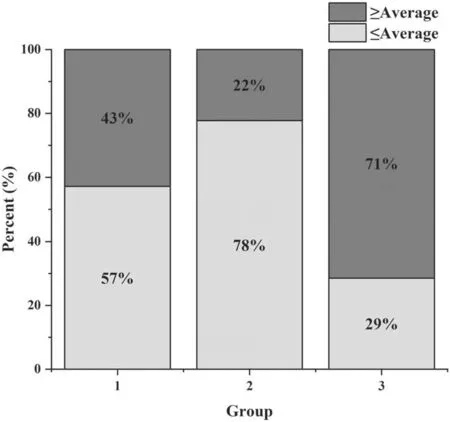
Figure 8.Final pileus area of G.lucidum at the 62nd cultivation day.
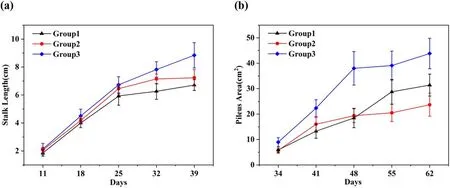
Figure 9.Growth trend of G.lucidum with days.(a)Stalk length and(b)pileus area.
3.4.Growth speed
The growth trend with growth time is shown in figure 9.After 10 d of culturing,cultivation spawns underwent primary differentiation,which is the recorded beginning of stalk length.Their lengths were recorded for 28 d.The initial growth trends in all three groups were similar.After 14 d,their growth trend differed.Group 3 grew faster than the others,and the stalk length was longer than those of the others in the end.Group 2 grew slightly better than group 1.Meanwhile,the pileus area increased after culturing for 33 d while the stalk length hardly grew anymore.Group 3 grew faster than the others at the start and harvested a larger pileus at the end.Group 2 was faster in growth than group 1 during the early days.Gradually,group 2 got slower than group 1 and harvested a smaller pileus area than group 1.
4.Discussion
In this study,the growth status was improved by proper plasma treatment.There are recent reports on the effects of CAP treatment on the growth of plants or edible fungi,and the possible mechanism has been investigated by various research groups.Linget alfound that after an appropriate CAP treatment dose,the germination rate of soybean seeds can be increased to 90%±1.58%from 82.20%±2.93%,for the control group,while CAP treatment overdose may not work and even harm the soybean seed[23].In a study by Zahoranovaet al,a proper dose of CAP treatment on wheat seeds can promote seed germination rate from 85% to 70%,while CAP treatment overdose will decrease the germination rate[41].This confirms our results that pulsed CAP treatment with the proper dose promotes growth and inhibits overdose treatment.
According to the literature,the surface tissue structures of seeds change after CAP treatment.It may promote the transportation of essential substances via channels induced on cell membranes[41,42].In addition,the contact angle on the seed surface with the external environment increases and allows the seeds to absorb more water.Proper water absorption can ensure adequate nutrient supply and generate energy for growth and differentiation[43].G.lucidumgrowth requires high humidity;therefore,it is reasonable to consider the enhancement of water absorption and essential substance transportation using growth stimulation as advantageous.Although,in our experiment,the growth rate of group 2 first increased and then decreased,suggesting that overdose may destroy the structure ofG.lucidum.
However,based on the present research,CAP treatment on different microorganisms has different effects.The number of pathogenic microorganisms that affect plant growth decreased significantly after CAP treatment.This may be another reason for the improved growth ofG.lucidumin this study.However,overdose treatment can harmG.lucidumand other beneficial microorganisms.Accordingly,we observed slight scars on the fruit bodies of group 2 after treatment because of the overdose treatment.
According to the study of Zhouet al,seed germination and plant length of mung bean have significantly improved after soaking in PAW[44].The reactive nitrogen oxide species generated by air plasma create an acidic environment after dissolving in water.It may promote leathering of seed chaps,thus enhancing the germination rate of mung beans and stimulating the growth of hypocotyls and radicles[44].It is easy to create this acidic environment that it prefers in the high humidity environment ofG.lucidumcultivation[45].Therefore,the formation of an acidic environment after plasma treatment may also be a reason for the improvement in the growth ofG.lucidum.In addition,the production of NOxcan provide essential nitrogen for growth that not only increases the yield and growth speed ofG.lucidumbut also improves its nutritional value[46].
The research of Shimizuet al,which treated mushrooms indirectly by simulating lightning,revealed that the yield of mushrooms improved along with increased energy that imposes on the culture medium within reasonable limits[31].The possible reasons were mainly the effect of the electric field and pressure waves generated owing to the thermal expansion of air during lightning strikes.The discharge process of the pulsed CAP treatment used in this experiment was relatively mild and the temperature was maintained at a low level.This does not cause enough pressure waves to affect the growth ofG.lucidum,but the influence of the electric field is a non-ignorable factor.
5.Conclusions
Stimulated growth ofG.lucidumusing pulsed CAP treatment was investigated in this study.Growth statuses were recorded and compared.It was discovered that plasma treatment could improve the growth rate ofG.lucidum,and the plasma dose could affect the stalk lengths and pileus areas considerably in different groups.The modest dosage of plasma treatment with 40 s plasma treatment every other week showed the best results,with a 33.63%increase in the average stalk length and a 28% increase in the number of individuals whose pileus areas were greater than the average with accelerated growth speed.Overdose treatment may cause harm toG.lucidum.The possible promoting factors may include changes in surface structures,reduction of harmful bacteria and fungi,and the presence of an acidic environment and electric field.
Acknowledgments
This work is supported by National Natural Science Foundation of China(No.52177145)and the Independent Innovation Fund of Huazhong University of Science and Technology(No.2018KFYYXJJ071).
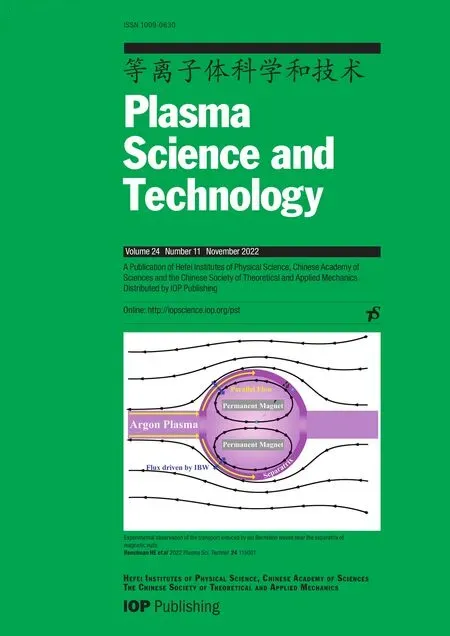 Plasma Science and Technology2022年11期
Plasma Science and Technology2022年11期
- Plasma Science and Technology的其它文章
- Interaction of an unwetted liquid Li-based capillary porous system with high-density plasma
- Nanosecond laser preheating effect on ablation morphology and plasma emission in collinear dual-pulse laser-induced breakdown spectroscopy
- Understanding the changing mechanism of arc characteristics in ultrasound-magnetic field coaxial hybrid gas tungsten arc welding
- An equivalent model of discharge instability in the discharge chamber of Kaufman ion thruster
- Comparative study of pulsed breakdown processes and mechanisms in self-triggered four-electrode pre-ionized switches
- Discharge and jet characteristics of gliding arc plasma igniter driven by pressure difference
